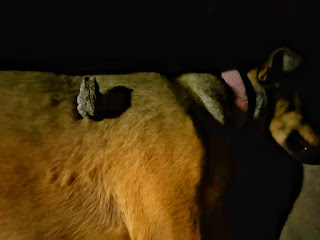We have a lot of snakes where we live and a lot of them are venomous as well. Even the non-naturalist will recognize some of the names such as the Black Mamba, Boomslang, Puff Adder, and Black-necked Spitting Cobra. I love telling people that not all of their bites are fatal but you might lose a limb. All joking aside, snakes are a threat but most if you are aware of your surroundings and take care at night or when shuffling around stationary items, you'll probably be fine.
The black-necked spitting cobra (Naja nigricollis) is a species of spitting cobra found mostly in sub-Saharan Africa. They are moderately sized snakes that can grow to a length of 1.2 to 2.2 m (3.9 to 7.2 ft) in length. They are pretty common in our area and they don't just have a clever name; they are known to stand upright and "spit" venom up to 3 meters (10 ft). If their venom enters your eyes, mouth, or open wound, you will be in trouble for sure. I've seen a few spit but I have been lucky to have been in a car each time. There used to be one that lived in a tree outside our banda but it has since moved on.
 |
| A young one ready to spit at me in the shower |
 |
| A year late I suspect this is the same individual. |
Well, last year we found a young one in our shower and we suspected he was living underneath the structure. The shower area is full of geckos at night and we've seen a few different types of snakes in there over the years. You gotta be careful at night!
I recently saw a black-necked spitting cobra during the day and suspected it was the same individual due to its size. After seeing the snake during the day, we noticed in the evening that a gecko was sticking out of a hole, a very unusual position for this particular species of gecko which does not normally spend time in holes. We poked the gecko and sure enough, it was not responsive. It makes sense that the snake had grabbed the gecko and prefers to consume it in the comfort and safety of its home.
 |
| Turners thick-toed Gecko has met its end |








